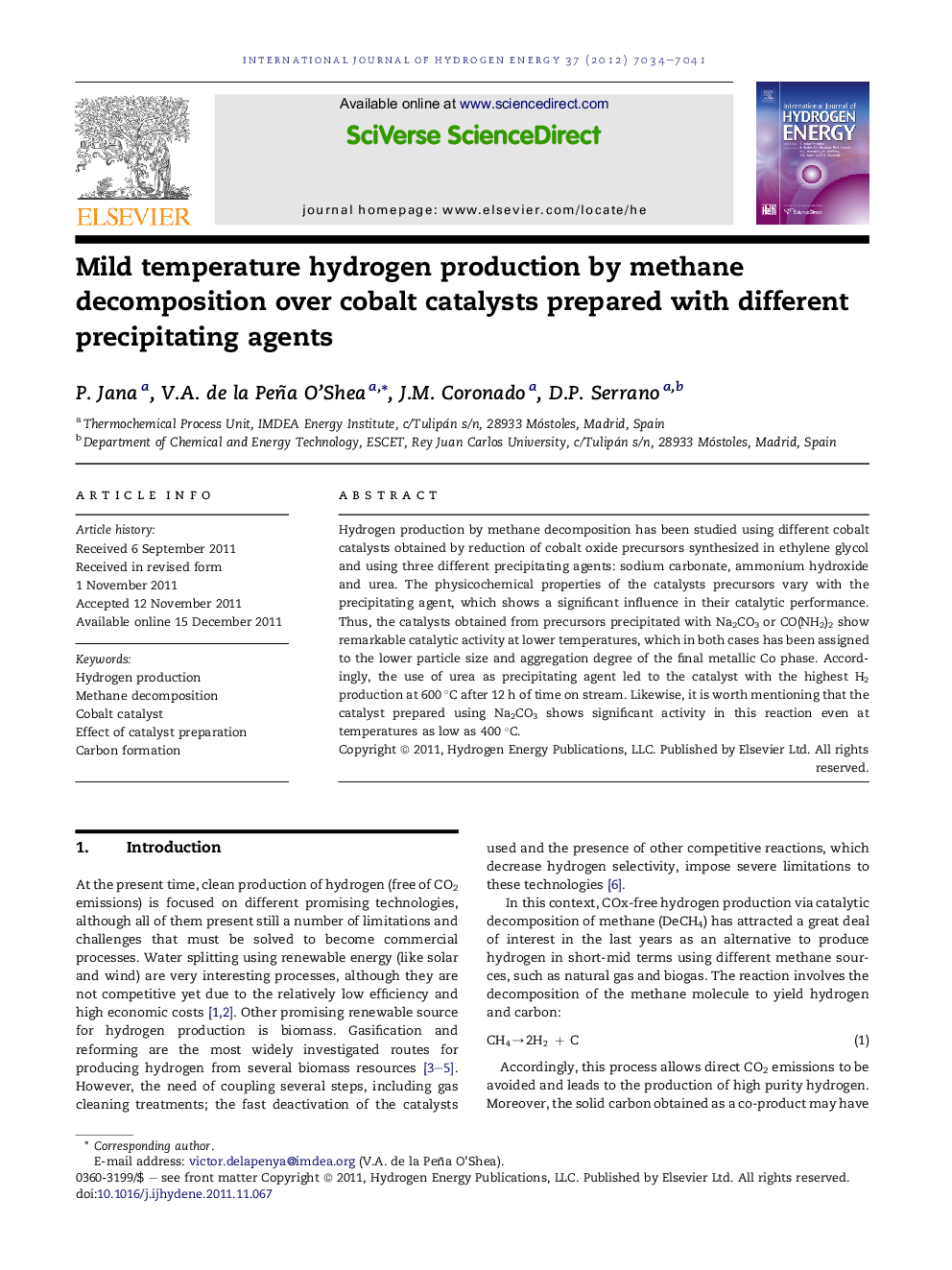| Article ID | Journal | Published Year | Pages | File Type |
|---|---|---|---|---|
| 1276649 | International Journal of Hydrogen Energy | 2012 | 8 Pages |
Hydrogen production by methane decomposition has been studied using different cobalt catalysts obtained by reduction of cobalt oxide precursors synthesized in ethylene glycol and using three different precipitating agents: sodium carbonate, ammonium hydroxide and urea. The physicochemical properties of the catalysts precursors vary with the precipitating agent, which shows a significant influence in their catalytic performance. Thus, the catalysts obtained from precursors precipitated with Na2CO3 or CO(NH2)2 show remarkable catalytic activity at lower temperatures, which in both cases has been assigned to the lower particle size and aggregation degree of the final metallic Co phase. Accordingly, the use of urea as precipitating agent led to the catalyst with the highest H2 production at 600 °C after 12 h of time on stream. Likewise, it is worth mentioning that the catalyst prepared using Na2CO3 shows significant activity in this reaction even at temperatures as low as 400 °C.
► Cobalt based catalyst efficiently actives in CO2-free H2 production via CH4 decomposition. ► Precipitating agent has a great influence on the physical and catalytic properties of these systems. ► Activation process (under either H2 or CH4) has an important effect on the catalytic activity. ► SC-Co catalyst shows a significant H2 production at mild temperatures (400 °C).
